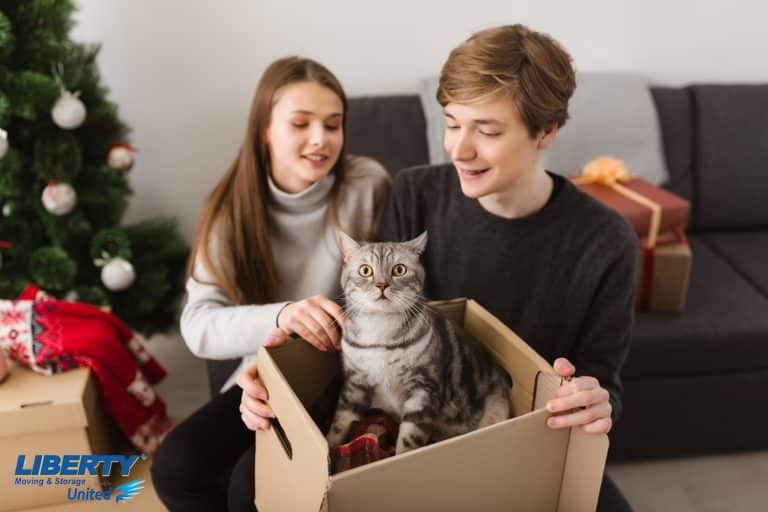Like humans, most animals struggle with the transition of moving into a new home. After all, animals are creatures of habit, and many become stressed and anxious if their schedules or living environments change for any reason. While moving is oftentimes unavoidable, there are some things you can do to make the transition of moving with pets as easy as possible. Here are some ways you can plan a safe and seamless move with your pets — and help them to adjust to their new surroundings in no time.
Preparing for Local Moves
Local moves are typically easier on humans and animals alike, largely because they require less travel and no overnight stays in a hotel. However, you may still choose to hire a pet sitter (we highly recommend Pamper Ur Poochie Parlor), family member, or friend to look after your animal companion during the move — especially if you’re worried about him getting hurt, stressed, or anxious as you pack up your belongings and during the move itself. But even if you don’t hire someone to look after your pet on moving day, it’s important to keep your companion in a crate to prevent him from wandering outside or getting hurt.
A few other tips for moving locally with an animal companion include:
- Introducing your pet to a travel carrier several months in advance.
- Sticking to a schedule as best as possible, including all meals, walks, and playtimes.
- Visiting the new home with your pet prior to moving day (if allowed by the current owners or tenants).
- Moving your pet’s toys and bedding into the new home, even if they’re old and you’d rather replace them with new items.
Planning a Long-Distance Move
Long-distance moves are usually far more stressful on humans and their animal companions. These moves typically require one or more days in a pet-friendly hotel, many hours spent in a motor vehicle, and in some cases, transportation by air. However, these tips will help you to prepare for a long-distance move with your animal companions:
- Bring your pet in for a veterinary exam prior to the move, and make sure his vaccinations are up-to-date.
- Book any pet-friendly hotels or boarding services well in advance.
- Pack a pet travel kit with snacks, water, food and water bowls, toys, and blankets.
- If you’ll be traveling by vehicle with a pup, look for dog parks and trails along the way.
- Check your airline’s pet policy if you’ll be traveling by air.
The ASPCA also offers safety tips for traveling by plane or motor vehicle with one or more animal companions, so make sure to use this resource.
Settling into Your New Home
Once you’ve arrived at your new home, it may take some time for your pets to feel comfortable in their new surroundings. To help them adjust after the move, however, it’s important to remain patient, calm, and attentive — and give them plenty of treats, pets, and reassuring words to help them feel safe and secure in their new environment.
After the stress and anxiety of moving into a new home, it’s quite common for animals to have occasional accidents or act out in other ways. However, professional carpet cleaners can remove stubborn urine stains for anywhere from $25 to $75 per room. And while carpet cleaning can certainly be an inconvenience, there’s no better time to do it than after moving into a new home. Just be sure to find out which cleaning method will be used, the timeframe, and even the company’s insurance coverage.
Moving with pets is stressful for both parties, but these tips will help to make the process as seamless as possible. Your pet probably won’t adjust to his new home overnight, but with the right amount of love and attention, it won’t be long before he’s back to being his normal adorable self.
Looking to take some of the stress out of the moving experience? Contact Liberty Moving & Storage at 1-800-640-4487 to get a free quote for your local or long-distance move!
Article by Cindy Aldridge of ourdogfriends.org











